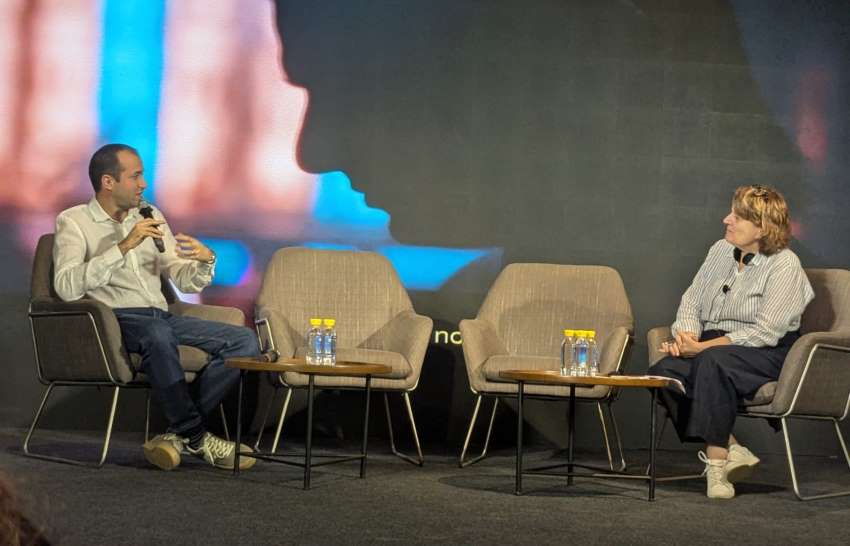FW
As per the Hong Kong Trade Development Company (HKTDC) Turkish exhibitors are trying to capitalise on rising prices of Chinese exports. The latest figures show a decrease in Turkey’s trade with China. In 2012, Turkey imported $1.7 billion worth of clothing items from China which is $300 million less than 2011, partly because of tariffs imposed by the Turkish government.
The silk sector particularly is at stake. China dominates the international sale of silk yarn. However, up to 1991, Turkey produced 15 per cent of the world’s silk supply. When China entered the international mark in the late 1980s, it was supplying silk at an unmatchable $4.00 per kg, but these prices have risen dramatically in the following years.
Turkish manufacturers are convinced that Turkish made fabrics may win on terms of overall quality and technical superiority of dyes used. Further, Turkish companies adhere more strictly to product safety guidelines compared to many Chinese competitors. Turkish companies are more hardworking and have greater technical knowledge, much of it gained from broader experience across Europe than their Chinese counterparts.
A local business analyst underlines that despite import taxes, it is still relatively easy, in financial terms, for Chinese companies to trade with Turkey. Domestic Turkish companies, however are looking for quality apart from the lowest price.
According to Turkey Union of Chamber of Agriculture (TZOB) chairman, Shams Bayraktar, “Cotton imports has been continuously rising, owing to the absence of any measures against the import of cotton in the country.”
A statement issued by TZOB, the said the country imported 613,000 tons of cotton in 2012, which is a 442.5 per cent more compared to the 113,000 tons of cotton imported in 1995. Bayraktar said the cotton sector is one of the most strategic sectors in the country, as it facilitates the textile and apparel sector of Turkey. However, the positive and negative development in cotton sector is highly influenced by industry and trade policies as well as world markets.
The TZOB official said cotton production in the country has also been declining consistently, in 2012, cotton produced in the country was 2.32 million tons, this is expected to decline in 2013 by 2 to 1.7 per cent year-on-year. The TZOB official urged that it was necessary to take measures for supporting Turkish cotton growers for them to compete with international markets.
Innovation was an important part of Intertextile Shanghai Apparel Fabrics and Verve for Design proved this fact while showcasing original designs from Australia, France, Italy, Japan, Korea, Taiwan and UK. The zone offered opportunities for new designers to display their work which was a crucial element of Verve for Design, which was firmly embraced by Australia’s Longina Philips Designs. “We have introduced a new constantly evolving collection called ‘The Print Room’, which was created as a platform to facilitate design by young emerging designers and offered us a distinct edge in terms of the design work we can offer to our clients,” said Senior Designer Shannon Cheung.
Handmade designs was one of the main attractions for Chinese consumers particularly in the mid range market. Italy’s Lineastudio di Sartori Stuart & C SAS is on point with this trend, bringing both handmade and digital designs in a bid to meet the major textile players in the Asian market, said Stuart Sartori, President.
This zone was truly about expressing creativity and showcasing originality. As Dietmar Voegel, owner of UK-based Circleline Designs pointed out, “We work with people who are interested in original design and artwork and want to distinguish themselves from the mass market.”
- 1
- 2
- 3
- 4
- 5
- 6
- 7
- 8
- 9
- 10
Obsessed with Talent: How a ‘Cultural Revolution’ is powering Trussardi’s fashio…
The inaugural 'Italian Fashion Days in India' (Le Giornate della Moda Italiana nel Mondo) officially kicked off yesterday, October 28,... Read more
Margins, Machines, and Misunderstandings: Inside the global garment shake-up and…
The global garment industry, long a symbol of globalization’s success and excess is entering an age of disruption. Traditional business... Read more
New markets, new factories, India’s apparel industry looks to Africa
In the quiet industrial corridors of Ethiopia’s Hawassa Industrial Park, rows of sewing machines with local workers assemble garments destined... Read more
From Imports to Innovation: India’s bid to lead the carbon fibre economy
A new report highlights the global carbon fibre and yarn market growing and how. The report by Thryve Research projects... Read more
ITMF Annual Conference & Annual Convention: Addressing industry challenges a…
This year, the ITMF Annual Conference & Annual Convention will be held from October 24-25, 2025 at Yogyakarta. Co-hosted by the... Read more
China’s Carbon Ambition: From industrial giant to climate market leader
When Beijing announced plans to enter the international carbon markets this October, the message was unmistakable: China no longer intends... Read more
Fashion’s double bind, innovation meets the economics of convenience
“We need to make fashion for worms. Fashion that can decompose in the soil.” When Arizona Muse, model and environmental... Read more
From satin to smart textiles, the rise of FDY in a changing market
In the complex world of polyester filament yarns, where POY (Partially Oriented Yarn) is the foundation and DTY (Drawn Textured... Read more
Polyester’s reign vs. Lyocell’s strain, can green fibers survive?
The recent job cuts announced by Lenzing, a pioneer in sustainable cellulosic fibers, are a stark reflection of the complex... Read more
Indian Textile and Apparel Exports Hit Hard in September: As US tariffs take hol…
The Indian textile and apparel industry has shown the first clear signs of being impacted by the new US tariffs,... Read more












